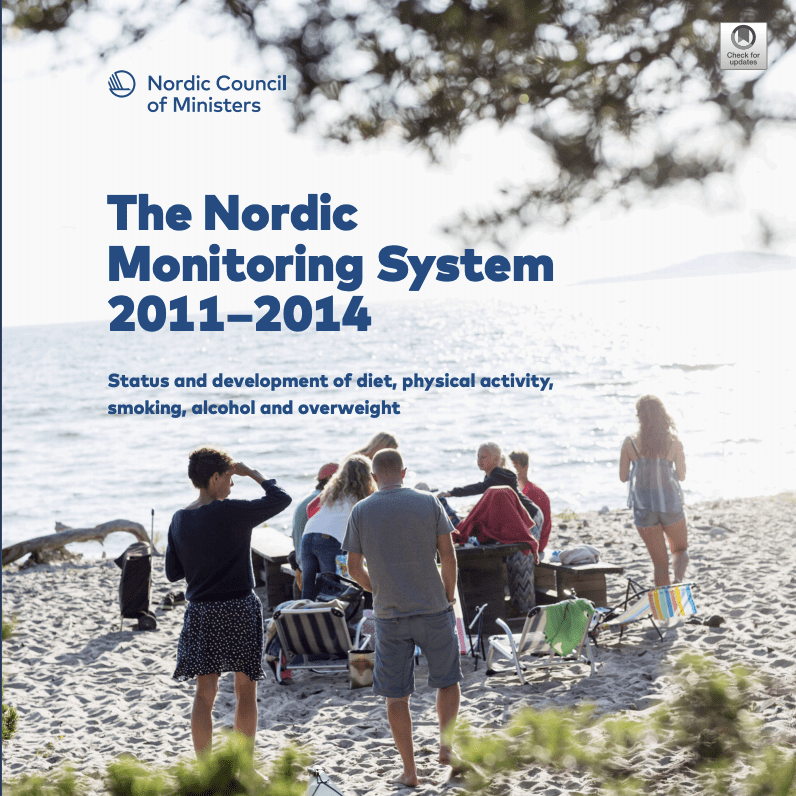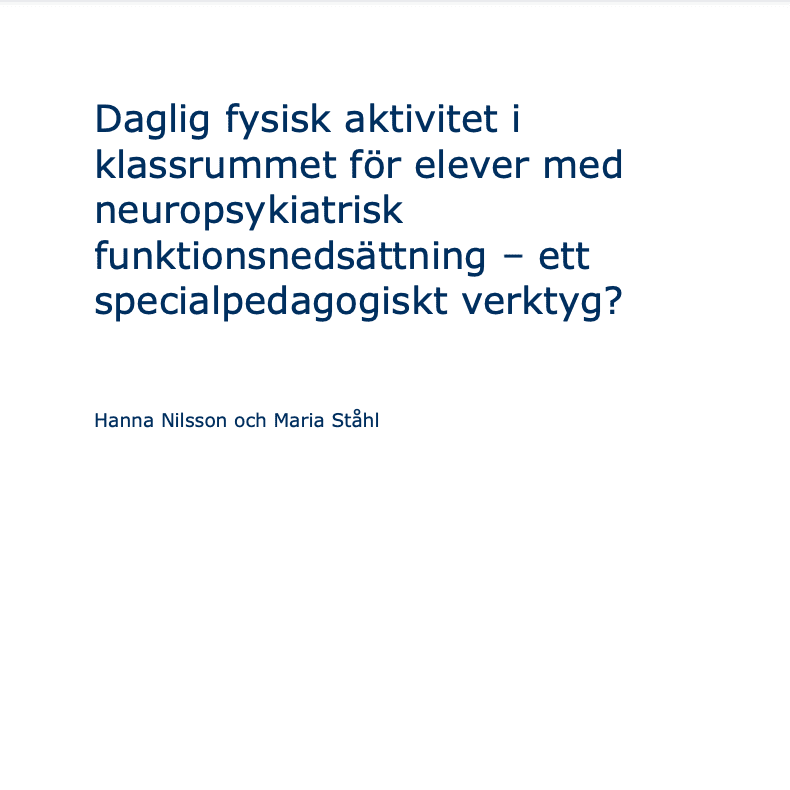Here we have collected facts and research on the health habits of children and young people. We particularly highlight scientific reports and articles related to the world of education and the impact of movement on learning.
Feel free to suggest
about current research that you think we should highlight!

Nearly nine out of ten children in Sweden live unhealthy lives
For the second year, Generation PEP releases its comprehensive review of the health of children and young people in Sweden. The results based on the surveyed group show, inter alia, that att:
- Only 14% get enough exercise as well as eat enough of what their body needs. Only two in ten reach the recommended amount of physical activity. Teenage girls are the worst off.
- Sitting in front of a screen takes up a lot of time, especially among young people. Nearly one in four teenagers spends five or more hours a day in front of a screen.
- Adults are important role models for both physical activity and eating habits. Children whose guardians are not active themselves are more likely to be inactive.
The report finds that healthy exercise and dietary habits strengthen our immune system and reduce the risk of a number of conditions later in life, such as cardiovascular disease and type 2 diabetes. Therefore, society needs to take the results of the study seriously.

Inactive for most of their waking hours
Report from the Swedish Public Health Agency, 2019
The report describes the movement patterns of Swedish children and young people, based on 11-, 13- and 15-year-olds who wore activity monitors for one week. The results show, among other things att:
- Children and young people are inactive for most of their waking hours on any day of the week, i.e. stand or move very little.
- Inactivity increases with age, by almost 10% from age 11 to 15, and boys are more active than girls of the same age.
- The school day contributes about 35% of the week’s total physical activity at moderate and high levels of effort.
- Those who experience high school stress are more inactive, both overall and during school hours.
In summary, activity has positive health benefits for the individual, both physically and mentally, and can also help to reduce health inequalities between different groups. It is therefore urgent to encourage and provide the conditions for more movement among children and young people, especially teenagers and girls.

Swedish children are least active in the Nordic region
Study by the Nordic Council of Ministers, 2011-2014
The study collected and analyzed a large amount of data on diet and physical activity in the Nordic countries between 2011 and 2014. Regarding physical activity in children, it is noted that:
- Overall, six in ten are classified as inactive, 64% of girls and 54% of boys. No major differences were found between years.
- The highest proportion of active children is in active Finland and the lowest in Sweden.
- More than one in seven spend more than four hours a day (outside school hours) in front of a screen, with more boys than girls.
Relationship between physical activity and school performance

Exercise has positive effects on the brain
A systematic review of international literature and studies on physical activity and school performance. The results indicate that:
- Physical activity and sport are good for children’s general health and linked to health later in life.
- There are links between physical activity and mental well-being, such as perceived quality of life and general mood.
- There is growing evidence that physical activity affects brain function and cognition, and thus has a positive impact on learning. This is because the brain receives more blood and oxygen, levels of norepinephrine and endorphins are affected resulting in reduced stress and improved mood, and finally the growth of new nerve cells is stimulated.
In addition to purely physical and chemical effects, the literature shows that activity improves children’s behavior in classrooms by helping them to concentrate.

Seven minutes of heart rate training improves memory
Study published in Research on Learning and Teaching, 2019
The study was conducted on 175 students in grade 7 in the city of Helsingborg. For five months, all math lessons started with seven minutes of heart rate exercises in five out of ten groups. The results indicated better concentration and working memory compared to the control group. Students of different genders and achievement levels were similarly affected. There was also no difference in how students from different school contexts were affected by the physical activity.

Children with ADHD need to move around while learning
Study published Journal of Abnormal Child Psychology, 2018
The study tested 62 boys between 8 and 12 years old, half of whom had ADHD. Test subjects were shown two short films: a Star Wars episode and a math instructional video. Both groups watched Star Wars intently, but the ADHD group had trouble sitting still during the math movie. The conclusions of the study include that:
- The cognitive movement pattern is triggered by challenging tasks in children with ADHD.
- It is not that children lack motivation at school, but that these children need to move when using executive skills.
- Movement while learning helps children with ADHD stay alert and focused.

Movement – an educational tool for neuropsychiatric disabilities
Essay at Stockholm University, 2017
The question in the paper is whether daily physical activity in the classroom should be a special educational tool for students with neuropsychiatric disabilities. Pupils in the study highlighted increased concentration (22%), more peace of mind (28%) and increased attention (39%). Half of the students found it easier to complete tasks. Based on teachers’ estimates, the most obvious changes were improved concentration and completion of tasks. Teachers also observed joy and increased self-confidence and less fatigue in the afternoons.

Smarter from exercise
Article in the magazine Elevhälsa, 2018
Based on various scientific studies, the article suggests that physical activity not only contributes to better health but also improves cognitive functions such as concentration and memory. And that regular exercise reduces sensitivity to stress and prevents low mood and depression.
Benefits of standing up

Standing up reduces the risk of disease
Study published in International Journal of Environmental Research and Public Health, 2019
The scientific question of the study is whether standing instead of sitting can improve the cardio-metabolic health of adolescents. According to the results, biomarkers among the teenage boys studied decreased, independent of other physical activity.

Children should not sit still
New York Times article based on scientific studies on physical activity and learning, 2017
The article highlights studies that point to positive links between activity and learning, and illustrates how different schools have incorporated activity-based learning into their teaching.

Sedentary behaviour affects the temporal lobe
Scientific study published in Plos One, 2018
The study examined the relationship between sitting and physical activity, and the thickness of the temporal lobe, which is involved in memory formation. It shows, among other things, a correlation between sedentary time and reduced thickness in certain parts of the lobe. However, physical exercise was not correlated with thickness, which suggests that running or similar activities cannot compensate for the damage caused by a lot of sedentary time.

